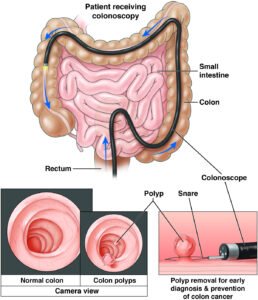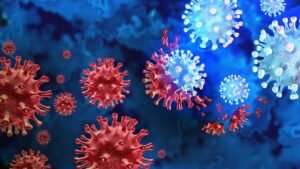Panlobular Emphysema_ Risk Factors and Living With Lung Disease
Understanding Panlobular Emphysema: Causes, Symptoms, and Living with COPD
Read Time: 6 minutes
Panlobular emphysema (also known as panacinar emphysema) is a form of chronic obstructive pulmonary disease (COPD) that impacts the entire acinus — the tiny, grape-like structures in the lungs where gas exchange occurs. This condition results in more widespread and severe destruction of the alveoli compared to other types of emphysema, significantly affecting respiratory health and overall quality of life.
What Causes Panlobular Emphysema?
1. Genetic Factors
Alpha-1 Antitrypsin Deficiency (AATD)
This hereditary condition limits the production of alpha-1 antitrypsin, a protein that protects lung tissue. Individuals with AATD are highly vulnerable to lung damage and are at increased risk of developing PLE even without a history of smoking.
2. Environmental and Lifestyle Triggers
Cigarette Smoking
Though PLE is less commonly linked to smoking compared to other emphysema types, tobacco use still contributes to lung tissue damage and inflammation.
Secondhand Smoke and Airborne Irritants
Chronic exposure to air pollution, workplace chemicals, or secondhand smoke can also increase the risk of emphysema.
Drug Use
Injecting substances like Ritalin (methylphenidate) has been associated with developing PLE, a condition also called “excipient lung disease.”
3. Rare Medical Conditions
-
Swyer-James Syndrome: A developmental lung disorder that can predispose individuals to PLE.
-
Obliterative Bronchiolitis (Popcorn Lung): Often triggered by toxic fumes, infections, or autoimmune conditions.
-
Low Birth Weight & Early Lung Infections: These may increase long-term susceptibility to lung disorders.
Common Symptoms of Panlobular Emphysema
Symptoms typically begin mildly and worsen over time due to irreversible lung damage:
-
Persistent shortness of breath
-
Chronic coughing
-
Frequent respiratory infections
-
Increased mucus (sputum) production
-
Wheezing and fatigue
-
Reduced ability to exercise or perform physical activities
Diagnosing Panlobular Emphysema
Early diagnosis is essential for effective management. Your primary care physician may refer you for the following tests:
Diagnostic Procedures
-
Chest X-ray or CT Scan: Helps visualize lung damage, particularly the widespread involvement typical of PLE.
-
Pulse Oximetry: Measures blood oxygen levels.
-
Arterial Blood Gas (ABG): Assesses oxygen and carbon dioxide levels in the bloodstream.
-
Lung Function Tests (Spirometry): Determines how well your lungs are working.
-
Blood Tests: Evaluate lung function and rule out other conditions.
-
ECG: Ensures heart health isn’t contributing to respiratory symptoms.
Differentiating Emphysema Types
Understanding the exact type of emphysema can guide treatment:
-
Centrilobular Emphysema: Affects the central areas of the lungs, commonly linked to smoking.
-
Paraseptal Emphysema: Impacts the outer edges of the lungs and may lead to lung collapse (pneumothorax).
Managing Panlobular Emphysema: Treatment Options
Although there is no cure for PLE, multiple treatment strategies can help slow disease progression and improve daily life:
-
Bronchodilators: Relax airway muscles, improving airflow.
-
Inhaled Corticosteroids: Reduce lung inflammation.
-
Combination Therapy: Uses multiple drugs to manage symptoms effectively.
-
Antibiotics: Treat or prevent respiratory infections.
-
Pulmonary Rehabilitation: Tailored exercise and education programs.
-
Supplemental Oxygen: Assists with severe oxygen deficiency.
-
Lung Surgery or Transplantation: Considered in advanced cases.
Life Expectancy and Prognosis
Several factors influence the prognosis for individuals with PLE:
-
Early Detection: Starting treatment early can significantly slow disease progression.
-
Lifestyle Choices: Avoiding tobacco and pollutants enhances longevity.
-
Medical Adherence: Consistent use of medications and follow-up care improves outcomes.
-
Genetic and Health Background: Family history and co-existing conditions play a role in disease severity.
On average, individuals with mild PLE who quit smoking and adhere to treatment can expect a near-normal life expectancy. Continuing to smoke, however, may reduce lifespan by 10 years or more.
Key Takeaways
-
Panlobular emphysema is a serious, progressive lung disease that affects all regions of the lungs.
-
While incurable, timely diagnosis and comprehensive treatment can significantly improve quality of life.
-
Risk factors include genetics, environmental exposure, low birth weight, and certain rare conditions.
-
Early intervention, healthy lifestyle changes, and consistent medical care are critical to managing PLE effectively.
Frequently Asked Questions
Is PLE more severe than other forms of emphysema?
Yes, because it affects all areas of the lungs, it tends to cause more widespread damage.
Can you live a full life with panlobular emphysema?
With early treatment, lifestyle changes, and no smoking, many individuals live active lives for many years.
What are the first signs I should look out for?
Shortness of breath, frequent coughing, and fatigue during physical activity are often early indicators.
Expert Tips
-
Stay up to date on vaccinations to reduce respiratory infection risks.
-
Track your symptoms and lung function regularly.
-
Consider joining a pulmonary rehabilitation program for expert guidance.
Join Our Health Community
Want more insights on lung health, lifestyle tips, and respiratory care? Subscribe to our newsletter for weekly updates and support.
Subscribe Now



